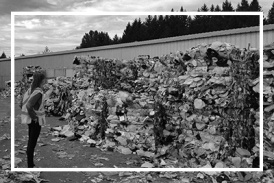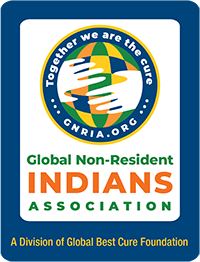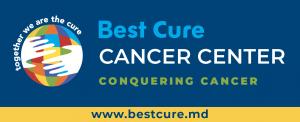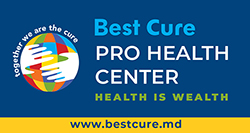Krishnan Suthanthiran, President/Founder of TBG, Establishes GNRIA and Aims to Promote India as A Global Leader
Many non-resident Indians want to contribute to their motherland, India. In fact, last year, NRIs sent about 120 billion USD back to India. India, with its 1.5 billion brilliant minds, has enormous opportunities and challenges to compete in a global economy that is reversing from outsourcing to insourcing. Overseas citizens of India (OCI), are a tremendous asset, wherever they are, contributing to the welfare of citizens and the local economies. India’s current trade deficit with China alone over the last 12 months is nearly 100 billion USD.
As India tries to meet global challenges while addressing its needs and growing its economy, many opportunities arise for Indian citizens. How can we, the global non-Indian residents, help collectively and cooperatively to navigate the future by enhancing the efforts of the federal and state governments of India?
What is the path to building a stronger country? Reinvesting. Suthanthiran understands this well and, in that spirit, has established the GNRIA. The GNRIA, along with the Proud Indian Party—another think tank also founded by Suthanthiran—will promote the investment of one percent of every GNRI individual's annual income in India as its goal.
GNRIA will hold its first meeting in New Delhi, India, from December 26 to 28, 2025. This will be the first of what is set to become an annual GNRIA meeting every December, beginning the day after Christmas, from the 26th to the 28th. The purpose of these meetings is to explore ways to contribute to India's growth while remaining connected to its roots. As part of this initiative, Non-Resident Indians (NRIs) and residents can come together to discuss and brainstorm ideas on (1) how to make India a global leader in various fields, (2) explore ways to preserve and promote India's cultural heritage and diversity, and (3) create actionable plans to address social, economic, and environmental challenges. The program hopes to not only strengthen the bond between NRIs and their homeland but also provide a platform for meaningful contributions to India's development.
For more information about Krishnan Suthanthiran, please visit his bio page at http://www.teambest.com/about_bio.html.
For more information about the Proud Indian Party, please visit www.proudindian.org.
For more information about Suthanthiran's Brachytherapy Research and Educational Foundation, please visit www.brachytherapy.org.
For more information about the BCF, please visit http://www.bestcure.md.
About TeamBest Global Companies
TeamBest is a multinational medical company founded in 1977 in Springfield, Virginia, USA. TeamBest is driven by one primary goal—to provide the best products and services to customers. The TeamBest family of companies, collectively known as TeamBest Global, has been proudly developing, manufacturing, and delivering reliable medical equipment and supplies for more than 50 years. TeamBest includes over a dozen companies offering complementary products and services for brachytherapy, health physics, medical physics, radiation therapy, blood irradiation, vascular brachytherapy, imaging, medical particle acceleration, cyclotrons, and proton-to-carbon heavy ion therapy systems. TeamBest is the single source for an expansive line of life-saving medical equipment and supplies. Its trusted team is constantly expanding and innovating to provide the most reliable products and technologies.
Today, TeamBest employs hundreds of talented engineers, scientists and others, offering thousands of products and services. TeamBest’s independently-owned companies are proud to be represented in North America, Europe, Latin America, Africa, the Middle East, and Asia. “Everyone deserves the Best healthcare. We aim to work with medical professionals to provide the Best products, technologies and services. Our mission is to uphold our reputation for excellence in the healthcare field by developing, manufacturing and delivering cost-effective, high-quality products to benefit patients worldwide,” states Krishnan Suthanthiran.
Krishnan Suthanthiran - President & Founder
TeamBest Global Companies & Best Cure Foundation
703-451-2378
email us here
Legal Disclaimer:
EIN Presswire provides this news content "as is" without warranty of any kind. We do not accept any responsibility or liability for the accuracy, content, images, videos, licenses, completeness, legality, or reliability of the information contained in this article. If you have any complaints or copyright issues related to this article, kindly contact the author above.
Protection Tax Helps Clients Resolve Unfiled Returns Before IRS Action Escalates
leagend T31 Sets New Standard for Affordable and Accurate OBD II Diagnostics
Couple Opens Unique '432Hz' Live Music Sanctuary on Spain's Costa del Sol for Summer Vibes and Son Awareness
Kalendarium
Więcej ważnych informacji
 Jedynka Newserii
Jedynka Newserii

 Jedynka Newserii
Jedynka Newserii

Handel

Ze względu na różnice w cenach surowce wtórne przegrywają z pierwotnymi. To powoduje problemy branży recyklingowej
Rozporządzenie PPWR stawia ambitne cele w zakresie wykorzystania recyklatów w poszczególnych rodzajach opakowań. To będzie oznaczało wzrost popytu na materiały wtórne pochodzące z recyklingu. Obecnie problemy branży recyklingu mogą spowodować, że popyt będzie zaspokajany głównie przez import. Dziś do dobrowolnego wykorzystania recyklatów nie zachęcają przede wszystkim ceny – surowiec pierwotny można kupić taniej niż ten z recyklingu.
Przemysł spożywczy
Rośnie presja konkurencyjna na unijne rolnictwo. Bez rekompensat sytuacja rolników może się pogarszać

Rolnictwo i żywność, w tym rybołówstwo, są sektorami strategicznymi dla UE. System rolno-spożywczy, oparty na jednolitym rynku europejskim, wytwarza ponad 900 mld euro wartości dodanej. Jego konkurencyjność stoi jednak przed wieloma wyzwaniami – to przede wszystkim eksport z Ukrainy i niedługo także z krajów Mercosur, a także presja związana z oczekiwaniami konsumentów i Zielonym Ładem. Bez rekompensat rolnikom może być trudno tym wyzwaniom sprostać.
Transport
Infrastruktury ładowania elektryków przybywa w szybkim tempie. Inwestorzy jednak napotykają szereg barier

Liczba punktów ładowania samochodów elektrycznych wynosi dziś ok. 10 tys., a tempo wzrostu wynosi ok. 50 proc. r/r. Dynamika ta przez wiele miesięcy była wyższa niż wyniki samego rynku samochodów elektrycznych, na które w poprzednim roku wpływało zawieszenie rządowych dopłat do zakupu elektryka. Pierwszy kwartał br. zamknął się 22-proc. wzrostem liczby rejestracji w ujęciu rocznym, ale kwiecień przyniósł już wyraźne odbicie – o 100 proc.
Partner serwisu
Szkolenia

Akademia Newserii
Akademia Newserii to projekt, w ramach którego najlepsi polscy dziennikarze biznesowi, giełdowi oraz lifestylowi, a także szkoleniowcy z wieloletnim doświadczeniem dzielą się swoją wiedzą nt. pracy z mediami.













.gif)

 |
| |
| |
|